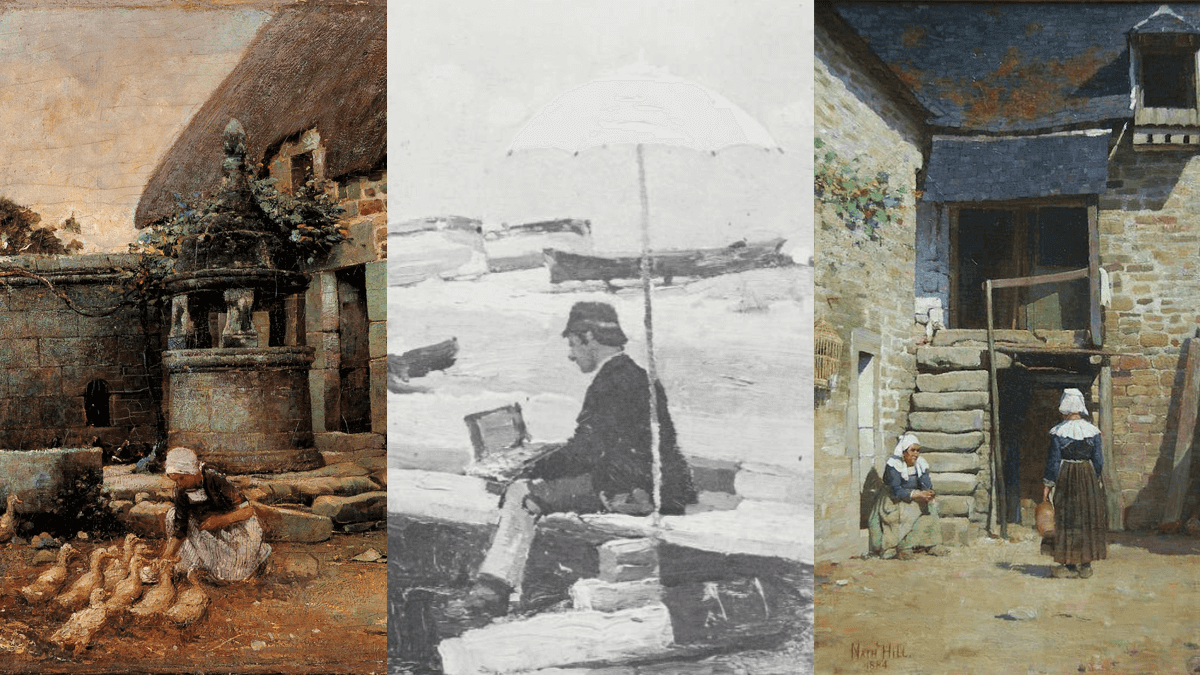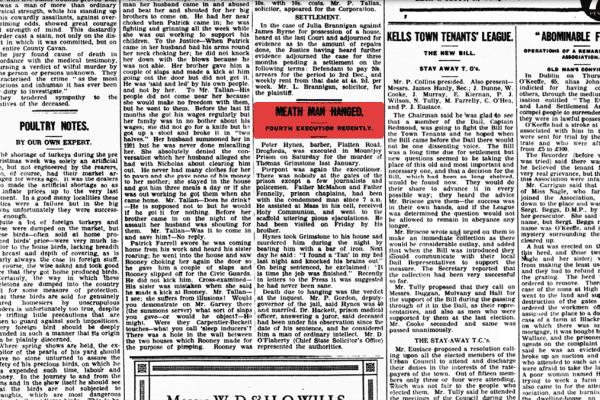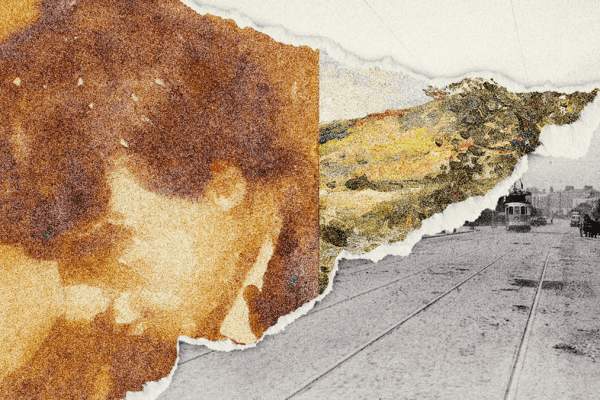Nathaniel Hill was born in Drogheda, Co. Louth circa 1861 to Richard Raisin Hill and Mary Anne Comberbach Brydon.[1] His paternal grandfather, also called Nathaniel, came to Drogheda from York prior to 1824 and plied his trade as a linen manufacturer. He established himself in the business community of the town, serving on the board of the Drogheda Steam Packet Company.[2]
This business acumen transferred to his son, Nathaniel’s father, who went into the oatmeal milling business under the name R.R. Hill & Sons which later merged to become McCann & Hill Ltd. with a premises on Merchant’s Quay.
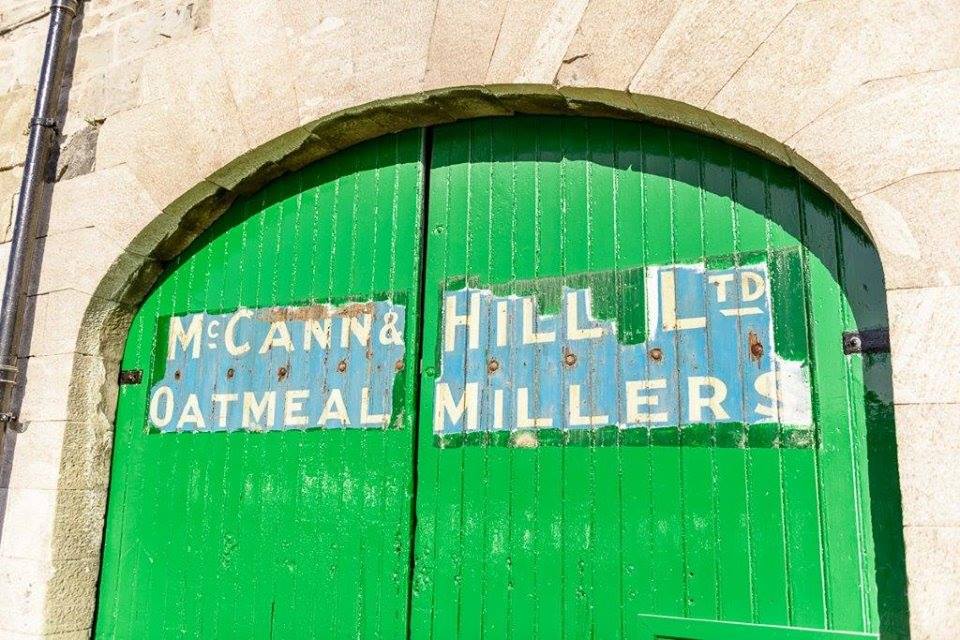
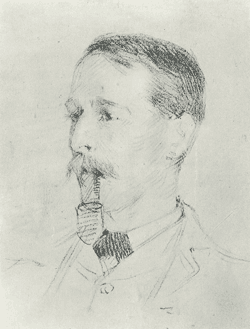
Nathaniel Hill
(in the collection of the
National Gallery of Ireland)
Unlike his two brothers, Nathaniel made the decision not to go into the family business. Instead, he entered the Dublin Metropolitan School of Art in 1877 to commence his art studies.[3] After three years, Nathaniel progressed to the Royal Hibernian Academy (RHA) where he further developed his artistic prowess amongst his fellow students, including the likes of Walter Osborne, Joseph Malachy Kavanagh, and Roderic O’Conor – the latter of whom he lodged with at their family home on 88 Pembroke Road.[4] Here he exhibited his first works to the RHA with a watercolour entitled Head of a Cocker Spaniel.
Ireland offered little to artists in Ireland in terms of an art culture compared to mainland Europe so travel further afield was commonplace. This led Nathaniel to venture to Antwerp in the autumn of 1881 alongside Osborne and Kavanagh to study at the Académie Royale des Beaux-Arts.[5] Antwerp was a popular location for expat Irish artists, with future students at the Académie including Henry Allan, Richard Moynan, and Dermod O’Brien.[6]
Upon arriving in the Belgian city, the trio lodged together at 49 Kloosterstraat[7]. Hill and Kavanagh entered the Antiek class where students primarily worked at replicating plaster casts before joining Osborne two weeks later in the Natuur class under the tutelage of Charles Verlat.[7] Nathaniel studied for two years in Antwerp and won his first Taylor Prize – the highest student honour in Ireland at the time – for his painting Convalescence (later renamed in future exhibitions as Convalescent).[8]
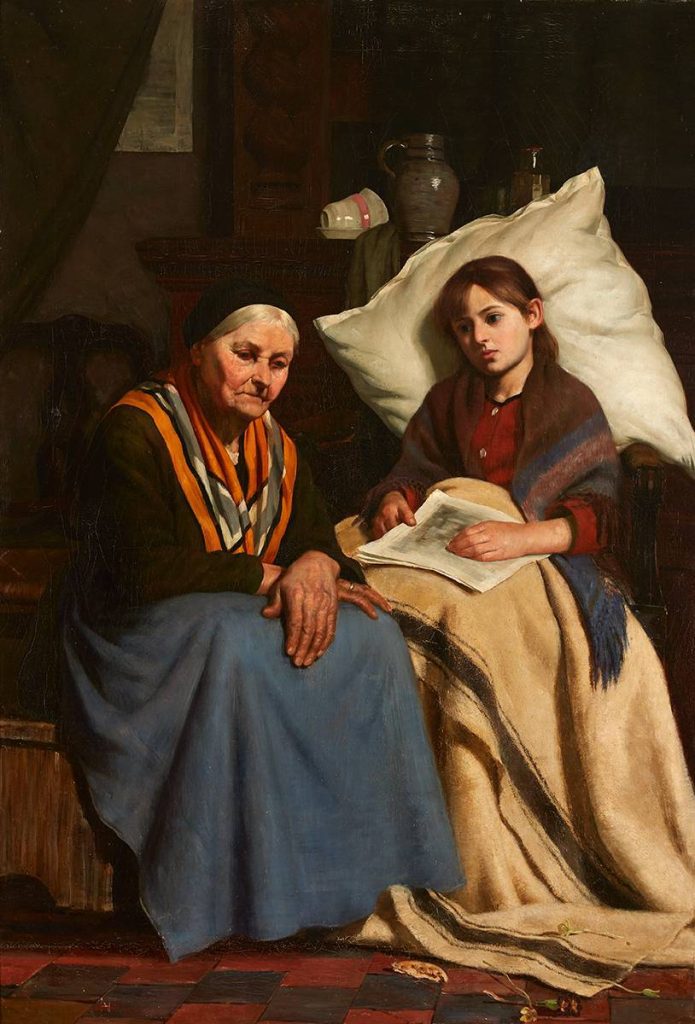
After completing his studies in Antwerp in 1883, Hill moved on to the plein air artist colony of Pont-Aven in Brittany, joining his friend Walter Osborne, where Nathaniel lodged at the Maison Gloanec which would later become renowned as the residence of one Paul Gauguin.[9] Here, Nathaniel’s works predominantly consisted of painting the locals going about their daily duties amid the backdrop of rustic Breton villages, including one piece that earned him his second Taylor Prize: Breton Peasants Waiting at a Convent Door for Alms.
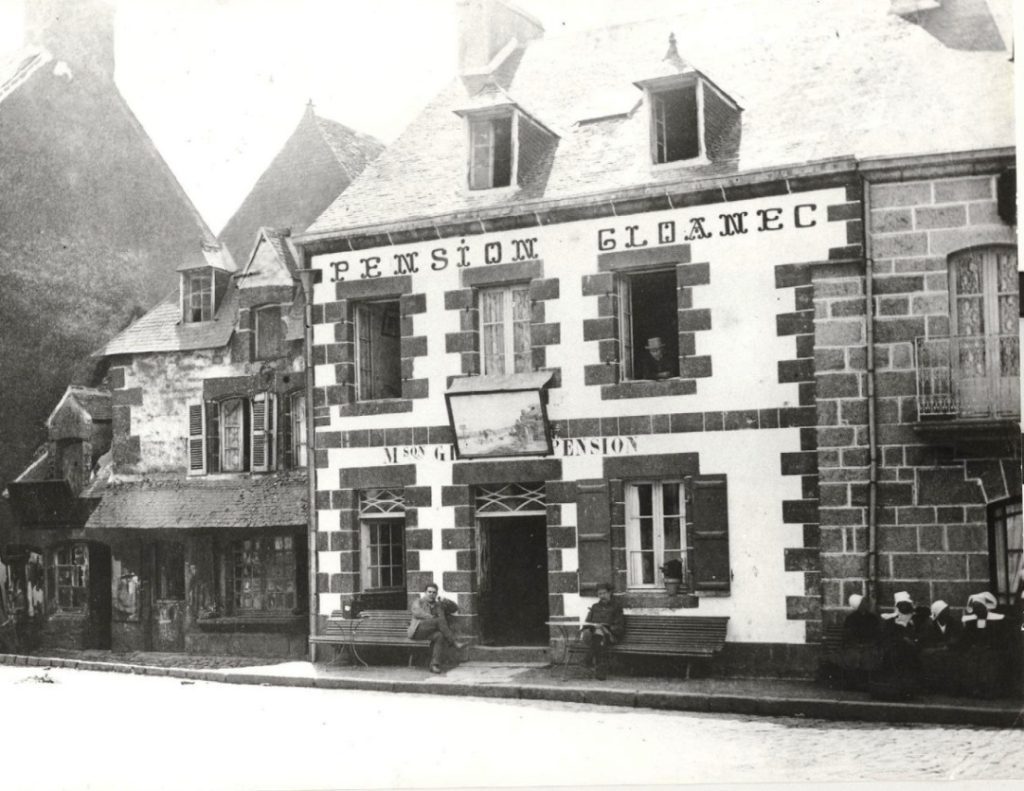
After a brief return to Ireland, Nathaniel then went onward to England in autumn 1884 where he again rendezvoused with his compatriot Osborne along with the English artist Edward Stott in North Littleton, Worcestershire.[1] Here, they painted across the south of England, including Walbersick, Suffolk, where Nathaniel was painted by Osborne.

by Walter Osborne
1885 saw Nathaniel finish runner-up in the Taylor Prize competition for his painting Interior of a Cottage, Old Woman Winding a Skein of Wool.[10] By the end of the year, it seems that Nathaniel had moved back to Drogheda as his submission to the RHA of Sunshine, Brittany gave his address as ‘Balmerino, Drogheda’ (while most artists date their works once they are completed, in Nathaniel’s case it was when he exhibited them).[3] He continued to primarily paint rustic, country scenes over the next few years while he remained in Ireland, with works including Interior of a Cottage and Turnip Gathering although these were interspersed with portraits of popular upper-class Drogheda figures like Thomas Plunket Cairnes.
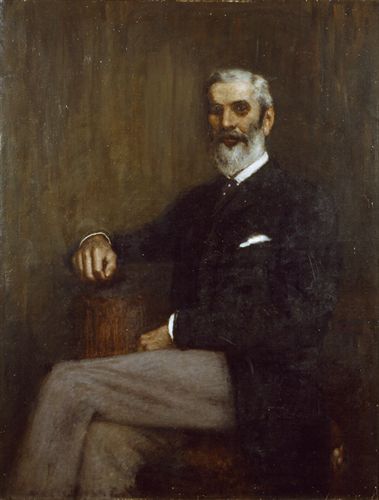
from the Cairnes family)
Nathaniel was elected an associate of the RHA in 1892 and a full academician two years later, now living in Queensboro, across the river from Balmerino.[11] In April 1897, Nathaniel’s mother died aged 80.[12] It’s from here that his artistic output practically ceases. In 1903, his long-time friend Walter Osborne died in Dublin of pneumonia.
After this point that Nathaniel returned once again to England, accompanied by his two sisters – Marion and Janet Graham. In the 1911 Census, the trio was recorded as residing in Bushey, located just outside Watford.[13] But by 1921 they had moved on to Betws-y-Coed in Wales where they lived in ‘Snowdon Villa’. Not much is known of what Nathaniel did in this time, if he continued art in some capacity or if he ever made visits to Ireland. What we do know is that on February 17, 1930 at his residence, Nathaniel would die aged 69 with his death attributed to cardiac failure, uraemia, and an enlarged prostate.[14]

Nathaniel is a figure shrouded in a veil of mystery – especially in the second half of his life where he by and large ceased painting. While this corresponds with the death of his mother, it’s by no means possible to fully attribute it to that fact. Due to his father’s wealth, it also seems that Nathaniel could support himself in some capacity through his inheritance of £100,000, with the 1911 UK Census listing his occupation as ‘private means’.[13] It also hasn’t been possible to discover where he is buried (assuming burial was the course of action). Members of the Hill family in Drogheda are buried in either St. Peter’s Church of Ireland or St. Brigid’s Churchyard in Beaulieu on the outskirts of the town.
It’s common for artists to achieve acclaim only after their death although for Nathaniel the case appears to have been reversed. When people speak of Ireland’s impressionists the figures that come to mind include Walter Osborne, Roderic O’Conor, Paul Henry, and John Lavery – most of who were acquainted with Nathaniel – whereas any prominent mention of him falls to the wayside, relegated to passing mentions of his association with his contemporaries.
Who knows why this could be. Perhaps part of the reason is that the vast majority of his works are held in private collections instead of on public display. Or maybe it’s because he rarely signed his name on works unless they were specifically to be exhibited, leaving some unidentified. Or another alternative reason is that both his painting style and subjects bear a strong resemblance to that of his compatriot Walter Osborne – so much so that Milmo-Penny Fine Art claim to have identified a number of Hill paintings that are instead masquerading as having been done by Osborne.[11] Ultimately Nathaniel Hill is an artist that has by and large fallen victim to the passage of time like so many others of his ilk, save for rearing his head every few years once one of his works appears on auction.
References
- Campbell, Julian. Art and Architecture of Ireland Volume II: Painting 1600-1900. Edited by Figgis, Nicola. Dublin: Royal Irish Academy, 2015.
- McHugh, Ned. “The Port of Drogheda 1790-1850: An Era of Regeneration and Resurgence: Chapter 1.” Journal of the County Louth Archaeological and Historical Society 26, no. 2 (2006): 169. https://doi.org/10.2307/27729983.
- Ferran, Denise. Irish Art from Nathaniel Hone to Nano Reid: The Drogheda Municipal Art Collection in Context. Highlanes Gallery Limited, 2008.
- Benington, Jonathan. Roderic O’Conor: A Biography with a Catalogue of His Work. Irish Academic Press Ltd, 1992.
- Sheehy, Jeanne. “The Flight from South Kensington: British Artists at the Antwerp Academy 1877–1885.” Art History 20, no. 1 (March 1997): 124–53. https://doi.org/10.1111/1467-8365.00048.
- Campbell, Julian. “Henry Allan’s Dutch Interior.” Irish Arts Review 29, no. 2 (2012): 94–97.
- Campbell, Julian. The Irish Impressionists: Irish Artists in France and Belgium, 1850-1914. The National Gallery of Ireland, 1984.
- The Cork Examiner. “The Taylor Scholarships,” April 7, 1883, 4.
- Sheehy, Jeanne. Walter Osborne. 1st ed. National Gallery of Ireland, 1983.
- Freeman’s Journal. “The Taylor Prizes,” April 1, 1885, 4.
- “Irish Art Archive – Nathaniel Hill – Milmo-Penny Fine Art,” n.d. https://www.mpfa.ie/hill.htm.
- Department of Tourism, Culture, Arts, Gaeltacht, Sport and Media. “Civil Records – Deaths in Drogheda District.” Irish Genealogy, n.d. https://civilrecords.irishgenealogy.ie/churchrecords/images/deaths_returns/deaths_1897/05865/4662598.pdf.
- “1911 England Census”, County: Hertfordshire, Civil Parish: Bushey, Enumeration District 7, Registration District: Watford, Registration District number: 140, Sub-registration District: Bushey, Street Address: Oakdene Cross Road, Class RG14; Piece:7693, number of schedule: 223
- Llanrwst Registration District, Wales, certified photocopy of death entry in the register for Nathaniel Hill, 17 February 1930; Llandudno Register Office, Wales.
